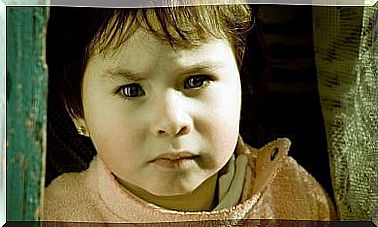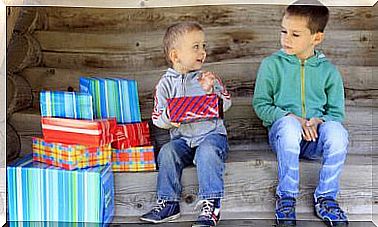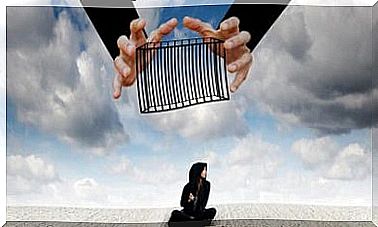Attachment And Couple Relationships
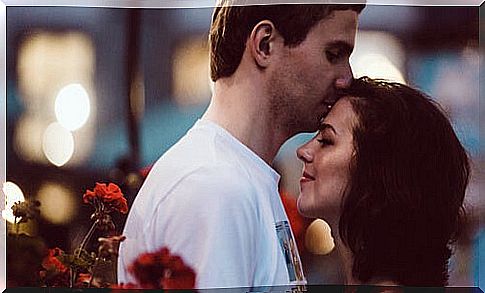
Although there seem to be many elements that can influence the consolidation of a couple relationship, there is a component that according to studies intervenes very clearly: attachment. There are different attachment styles, experienced during childhood, that can condition — never determine — the type of relationships we maintain later. For this reason, several theories that speak of the relationship between attachment and couple relationships are presented below.
Before introducing psychosocial theories of attachment and relationships, it is necessary to understand its role in human experience. Attachment does not exist by chance.
From evolutionary theory, it is argued that emotion is one of the main strategies to adapt to the environment. Emotions help us to survive, as they are alarm signals that the body receives and that allow it to respond quickly and effectively to the demands of the environment. The same thing happens with attachment, which is defined as a type of emotion useful to ensure the bond and the help of adults with the young.
Through attachment, a union or association is created between the adult and the newborn that is postulated as necessary, especially in situations of threat or danger. Therefore, from this theory attachment is considered as an emotional system.
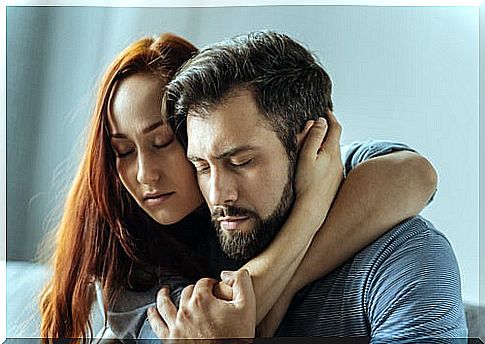
Objective of couple relationships: survive
On the other hand, it has been studied that in the consolidation of romantic relationships, one tries to ensure not only their survival but also the continuation of their genotype. There are similar motivations in both relationships —between the adult and the offspring and in the couple—, it does not seem unreasonable to think that attachment can also play a fundamental role in couple relationships.
On the other hand, there are parallels between the behaviors that occur in both types of relationship, such as:
- High activation levels in the early stages of the relationship.
- The security and happiness felt within the relationship — which is found between adult and child but also in the couple.
- The fear of abandonment.
- Apathy reactions with the separations of the other member.
Attachment theory: why there are types of couple
From attachment theory, it is argued that during the first years of life, the child will gradually develop a model of interpersonal relationship. This means that you will learn to relate to your beliefs or expectations about how others will respond to your calls for care.
Depending on how those calls for care have been answered in childhood, this is how the person will relate and establish different types of couple relationship.
Types of attachment and types of couple relationships
There are three types of attachment, depending on the help, care and understanding they provide. From that attachment types of relationships will develop.
Safe style, safe partner
The secure attachment is characterized in that the child is able to explore the world, but it feels safer when your caregiver or attachment figure is close. When you have needed it, you have been given that care.
People with a secure attachment style are more likely to develop relationships that make it possible to identify feelings and emotions of concern and anxiety – in the partner and in oneself – and know how to respond to needs. They are people who seek others without fear or fear appearing.
Avoidant style, does not lean on anyone
The avoidant attachment arises when the attachment figure for the child does not respond to their demands practically never care. For this reason, and since they have not gotten used to it, these children do not look for their caregivers when exploring the world; they don’t seem to exist.
Relationships that arise from an avoidant attachment are elusive. The couple’s signs of anxiety and fear are not heeded, and their help is not sought when one feels that fear or needs care. They do not ask for such care, and they do not seek social support to solve problems.
Ambivalent, compulsive style
In ambivalent attachment, attachment figures sometimes provide caring behaviors, and sometimes not. It is this insecurity that causes children not to want to explore the world, since they do not know if when they ask for help, their demands will be answered or not.
This type of ambivalent attachment gives rise to people who, in relationships, do not know how to tackle their problems autonomously. In addition, they are people who direct their attention a lot to anxiety and fear and compulsively seek that attention and help.
Attachment as a predictor of couple relationships
Attachment and relationships are not only linked in the establishment of the relationship itself. Some authors find attachment as a predictor of a good or toxic couple relationship.
Hazan and Shaver (1992) understand that the pattern of security often leads to happy love relationships peppered with positive emotions and feelings of trust. Avoidant attachment would lead to over-concern about breakups and a very striking lack of confidence. Finally, the ambivalent attachment would lead to exciting and painful experiences, much more intense but also more unstable.
Attachment and opinion about the partner
Other authors, Collins and Read, find that the confident style leads to people who trust others, are much more emotionally expressive, and who tend to have a positive opinion of their partner.
Regarding those who develop an ambivalent attachment, they are usually people with low levels of self-confidence and assertiveness, with very obsessive love relationships and high levels of emotional dependence.

Attachment experiments: does it influence our relationship?
There are many and heterogeneous investigations that have focused on the analysis of the association between attachment style and couple relationships. Simpson, Rholes and Nelligan (1992) studied the type of responses a group of women had when supposedly attending a job interview. Those who had reported a secure attachment during childhood preferred to seek the support of their partners to calm their anxiety. Those who had an avoidant attachment tended not to lean on their partners and manage their anxiety alone.
Similarly, Tidwell, Reis and Shaver (1996) found in a study of daily interactions of a certain group, that people with an avoidant attachment reported greater negative emotions, especially with people who could arouse their love interests. As a result of these investigations, the relationship between insecure attachment and depression, loneliness and anxiety was studied.
Finally, Fraley and Shaver (1997) also showed that attachment is related to the type of behavior that the person will emit when the couple is separated. Results were very similar to those described above.
Conclusions: the importance of attachment
What is stated in this article seems to make clear the relationship between attachment and couple relationships. Not only that, but it seems to influence the type of partner we choose, the relationship we establish with her, and the most likely behaviors and emotional styles.
Although there are many factors that influence whether a relationship is healthy or toxic, it seems that attachment in childhood is a good predictor. Not only to promote secure attachments due to their importance in the later development of the child, but also to know the risk factors of each person in the establishment of a relationship – whether due to emotional dependence, being obsessive … – and anticipate them.
